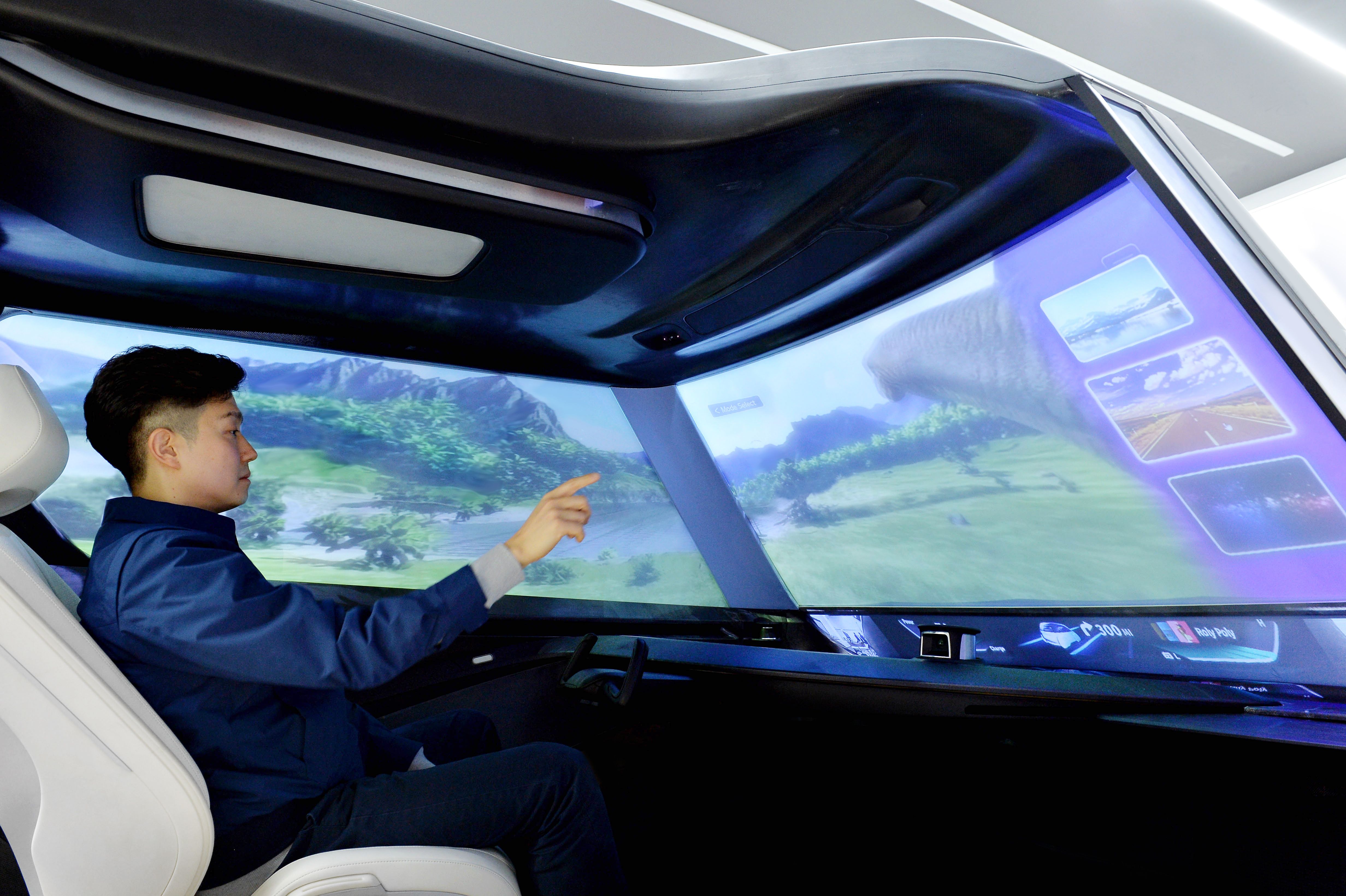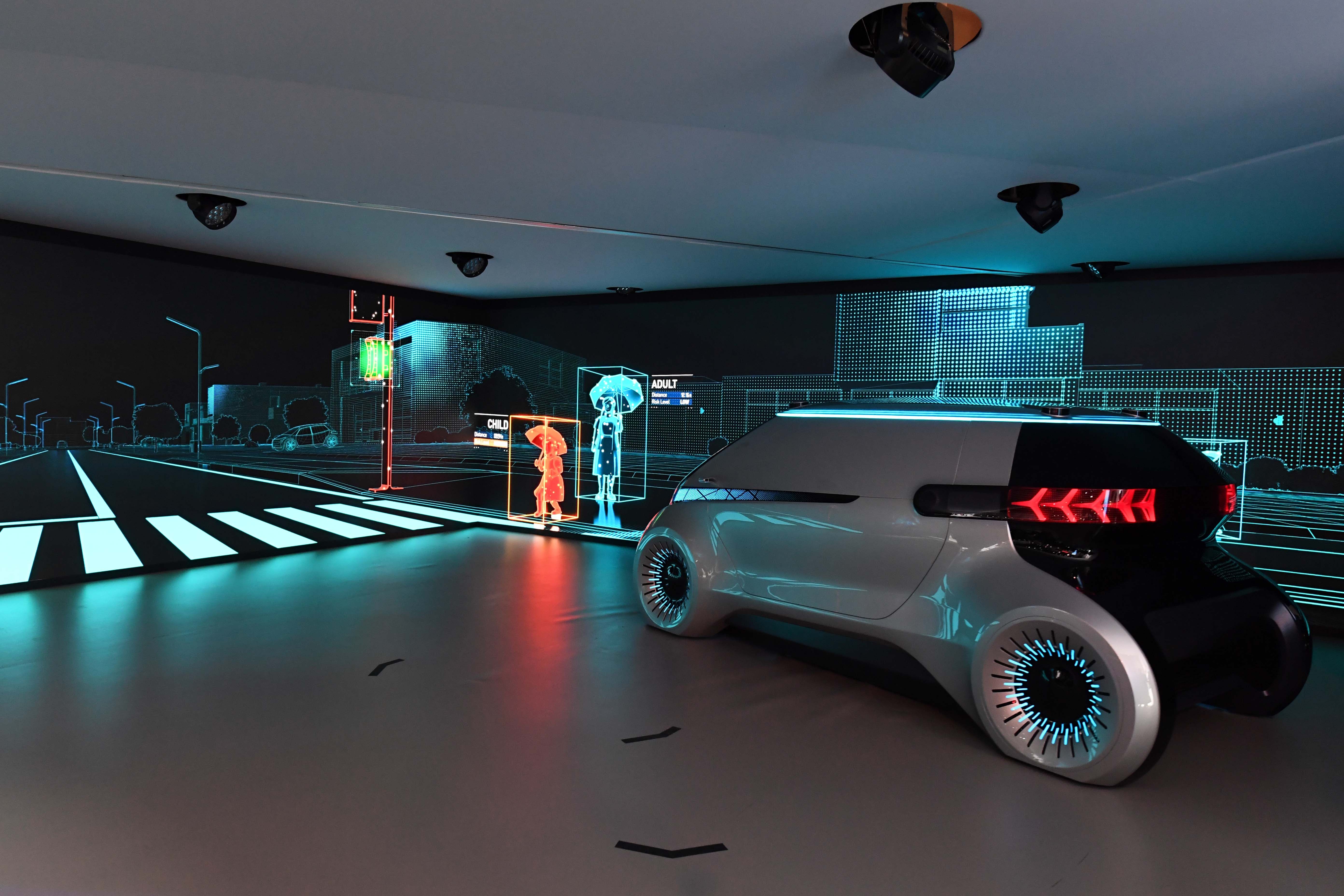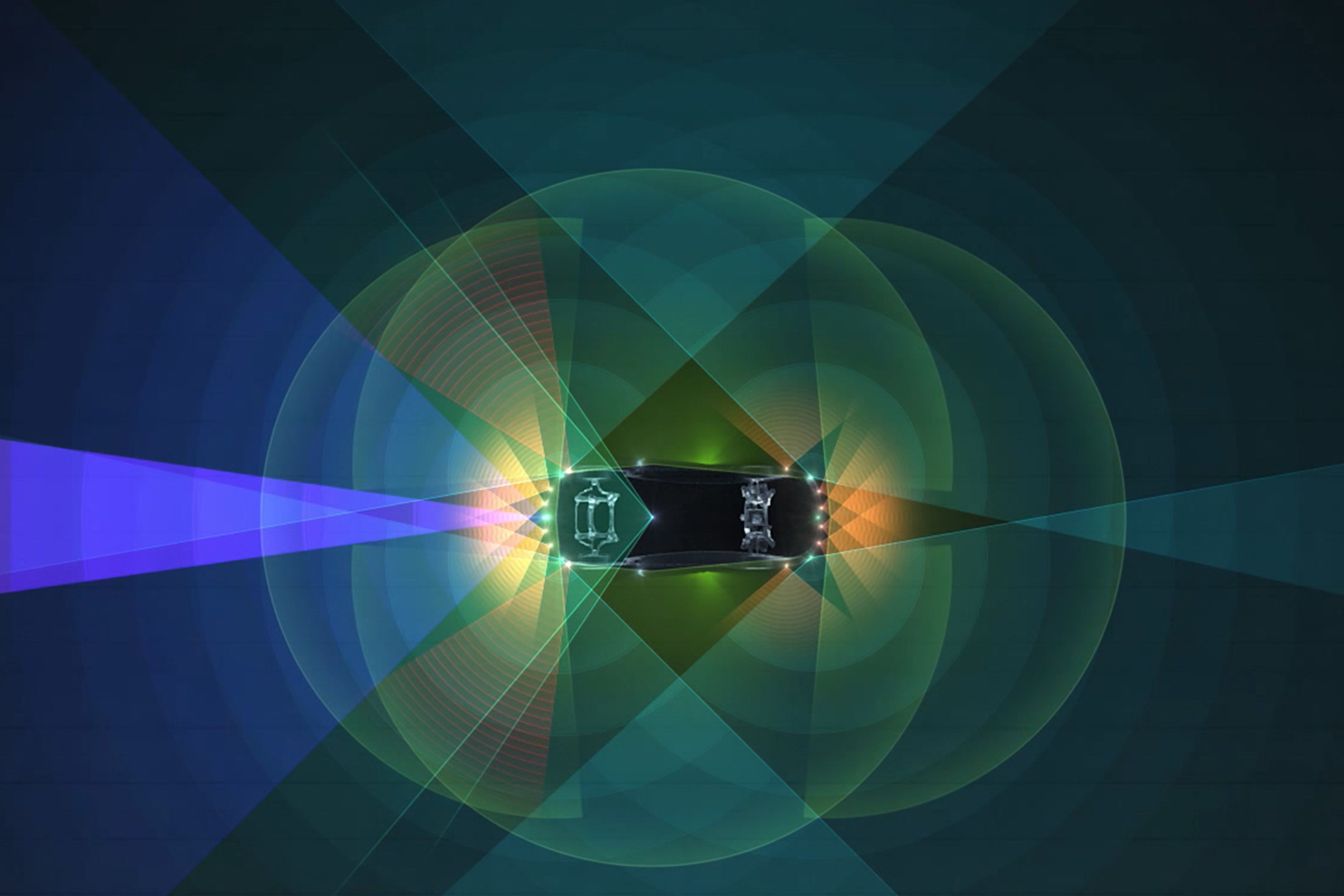Hyundai Mobis, the parts and services division of Korean auto giant, took part in the festivities of the 2019 Consumer Electronics Show with a concept that embraces the role that lights play — yes, lights — in improving the safety of autonomous driving vehicles. Called the Communication Lighting Concept, the coupe-like creation’s importance isn’t grounded in its appearance, but more so in the technology it carries. In this case, the concept is equipped with an assortment of lights and displays that it uses to communicate its intentions to pedestrians and commuters alike, alerting them of potential dangers and hazards on the road. Hyundai Mobis says that the technology can be rolled out in a quick and cost-effective manner, though that would still depend on the willingness of automakers to incorporate the technology into their own vehicles.
What Hyundai Mobis is presenting sounds so revolutionary in the vacuum of autonomous driving technology, and yet, it really is just a modern approach to an age-old automotive idea. The use of lights as safety measures in the auto industry has been around for a long time, manifested mostly in the turn signals and the brake lights of a car.
And yet, The Communication Lighting Concept that Hyundai Mobis is presenting is potentially ground-breaking because it uses modern means to convey an autonomous-driving car’s intentions to pedestrians and motorists. It’s not signals anymore; it’s displays. The headlights, for example, can project a “bright red wearing symbol” to alert pedestrians that it is unsafe to move in front of a vehicle. When the vehicle stops, the headlights project a crosswalk symbol onto the ground to let pedestrians know that it’s safe to cross a street. The concept effectively adapts the functions of a stop light and crossing light into its own. As I said, it’s a modern approach to an old idea.
To be fair, the Communication Lighting Concept also comes with modern safety features that have yet to be used in meaningful ways by the industry.
On the one hand, the Communication Lighting Concept’s features are modern adaptations of light safety measures that we already have on the road. But the real trick that Hyundai Mobis achieved is finding new use for these traditional safety lights as tools that a vehicle can carry with it. It’s not a ground-breaking technology by any means, but rather, it’s an evolution of an existing technology that carries the same purpose of saving lives and improving safety conditions on the road.
Further reading
Toyota Research P4 Automated Driving Test Vehicle
The 2019 Nissan Leaf e+ is Here to Fix the Wrongs of all Leafs that Came Before It
BMW's New Futurelight Camper Concept Represents the Future of Outdoor Adventure
Toyota Showcases its "Toyota Guardian" Technology that Could Create Superhuman Drivers



